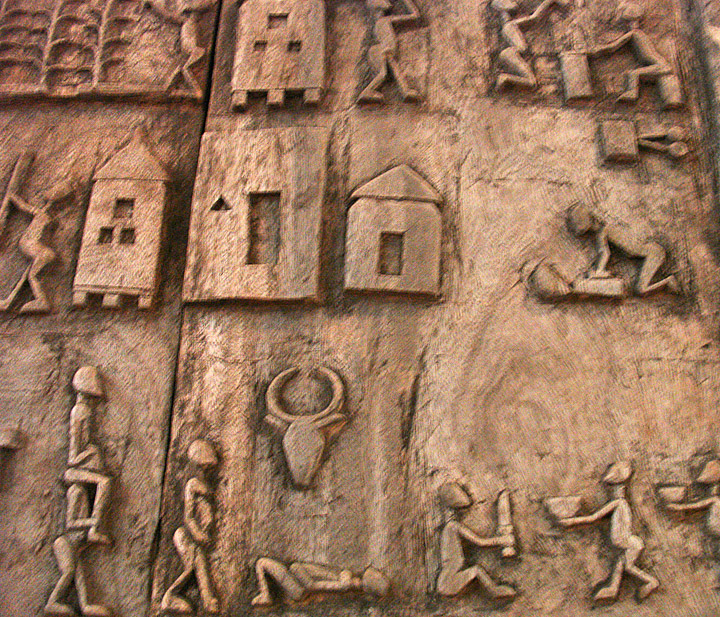

IFAN Museum
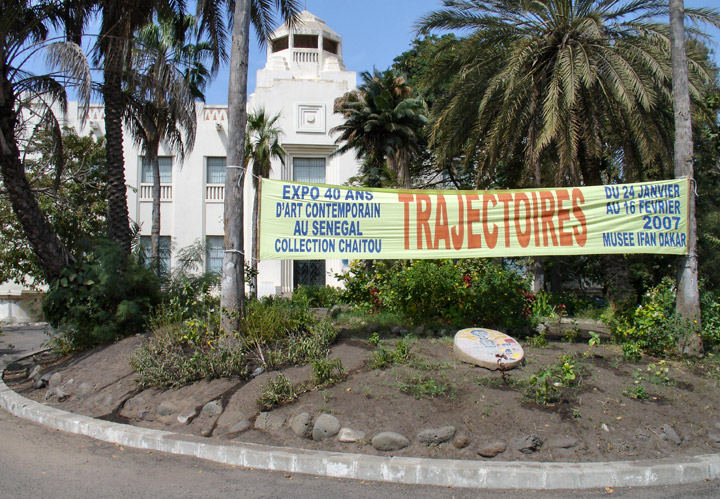
IFAN Museum
The IFAN Museum (Institut Fondamental d'Afrique Noir) has an impressive collection of masks, statues, musical instruments and agricultural implements from all over West Africa.
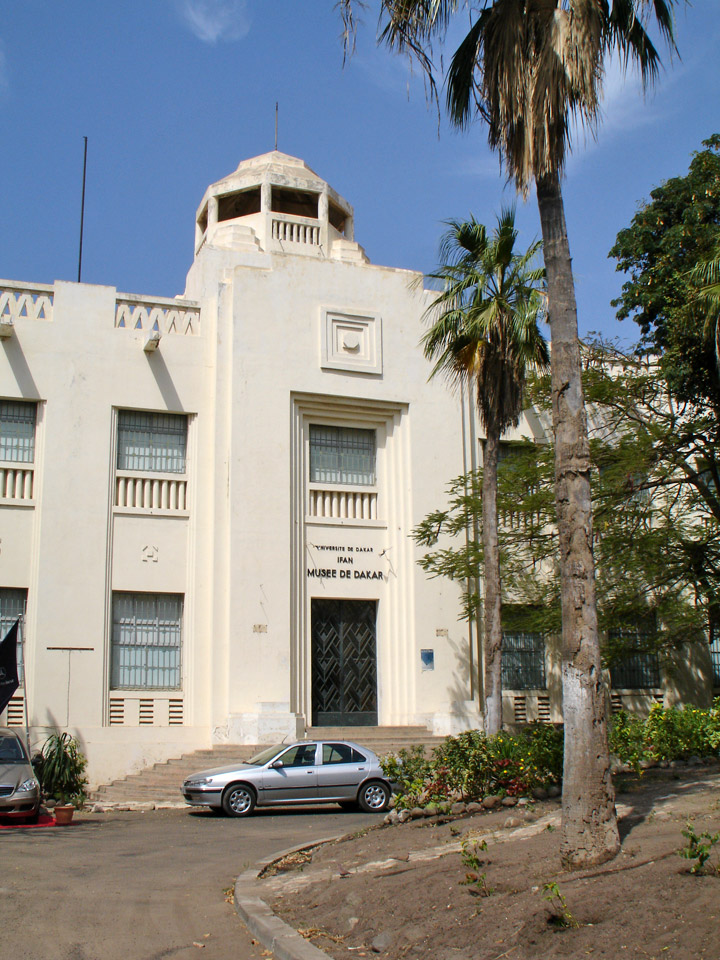
Black African Fundamental Institute
Black African Fundamental Institute, the
temple of primitive art close to the National Assembly of Senegal at Soweto
Place ; the exhibition room is a real place of emotions, of superstitious fear.
What a lot of wonders also, a delicious visual and spiritual delight provides
itself to the public. Inside the room, the smell straw and dust like in paper’s
archives warns the visitor on the age of the works.
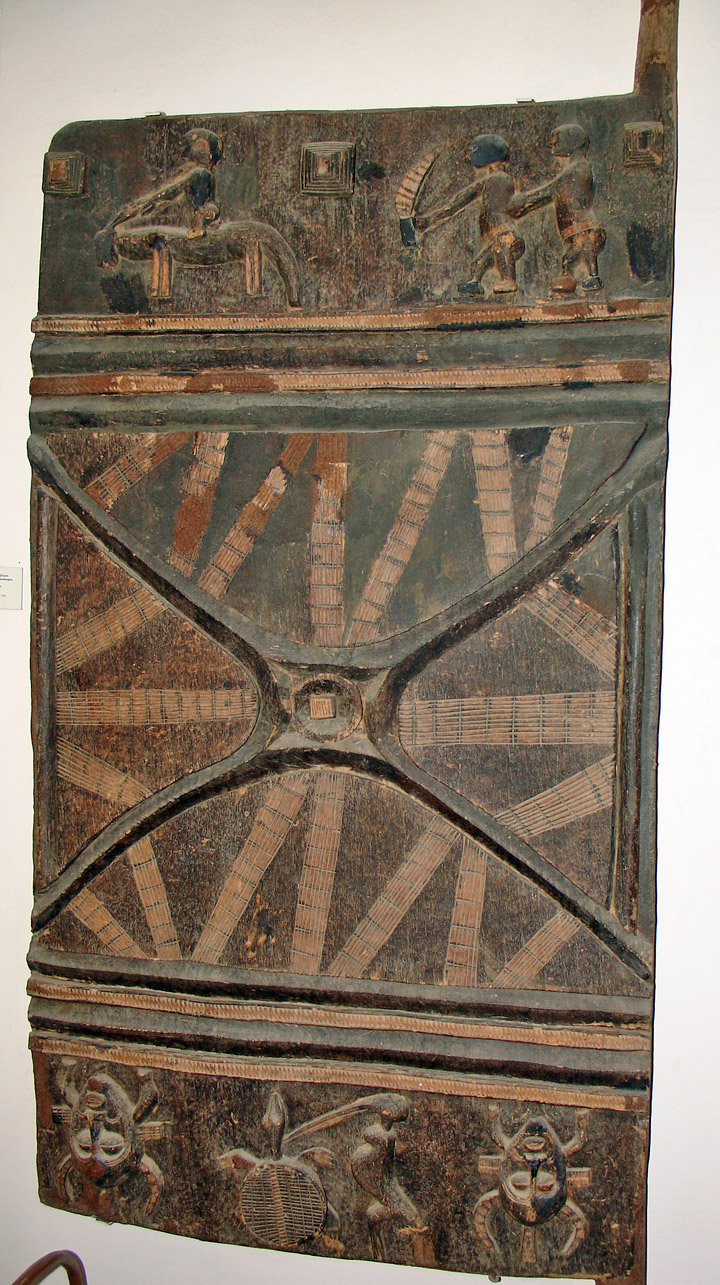
granary door
In the first section, you are welcomed by works on the Senoufo , and their history, their practices and social organization are illustrated. Let us take the example of Senoufo’s funeral in Cote d’Ivoire : drums slung across the shoulder, the head covered by a mask, the traditional musician steps across the laid body. At the same, other traditional musicians are performing. The scene takes place in a village, near the huts and the cereals stores. Along the left corridor, there is a succession of masks that give information on the senoufo’s sub region and on their society’s stratification.
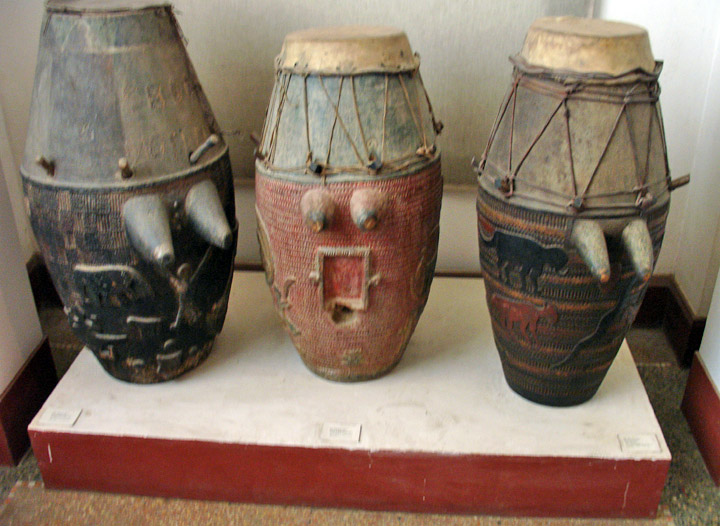
female drum cases
In the same batch, we have masks of war, of race, of singer and hunter ; masks of judge, of fetish, of beggars and traditional musicians, dancers hats, calabashes, baskets, pillar of shelters, capped vessels, raffia clothes... so many masks, so much emotion and personal enjoyment. These masks have captivated such a lot of tourists. Ariane Janson , fifty years old is a French citizen who has been staying in Dakar for ten days. This dermatologist is fond of masks, what makes her visit to Cheikh Anta Diop IFAN museum a compulsory act. “I am fascinated by African masks, what has stricken me the most here is the perfect restitution of ceremonies. We just deplore the absence of video. Because, we can see plastic beauty, however we don’t know what it means” said Ariane Janson.
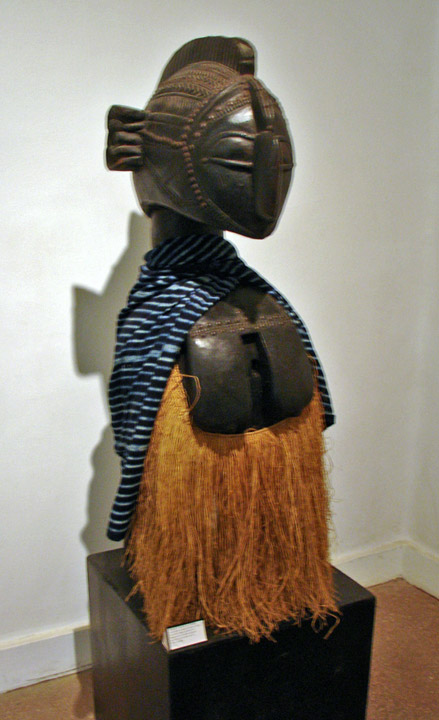
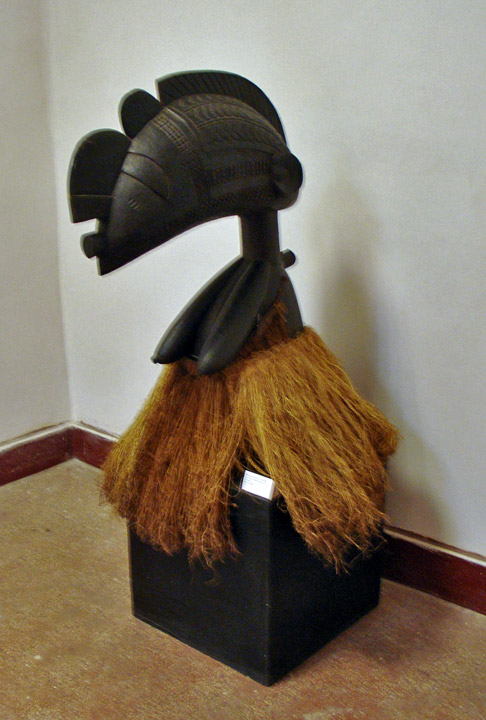
In the right corridor, you can contemplate an ancestor’s altar, sanctuary’s statuettes, a primitive baby-cover and headrest, a dancer hat ornament, a basket work, a just- married basket. These works have been collected in West Africa, in the ancient regions of Segou, Sonrai, Sikasso(Mali), Niafara, Tomadi (Cote d’Ivoire), Gouin, Oubritenga, Boulgou (burkina faso). As far as the Senoufo are concerned, “ they are divided through out four countries : Cote d’Ivoire, Mali, Burkina Faso and Ghana”. Their language is derived the language of the voltaic family : Seynar, also called Senombele, “they are one of the most ancient population of the region”. PORO is their religion. The senoufo believes in Koulotiolo, his god, “ creator of the World, a distant and out of reach divinity”.
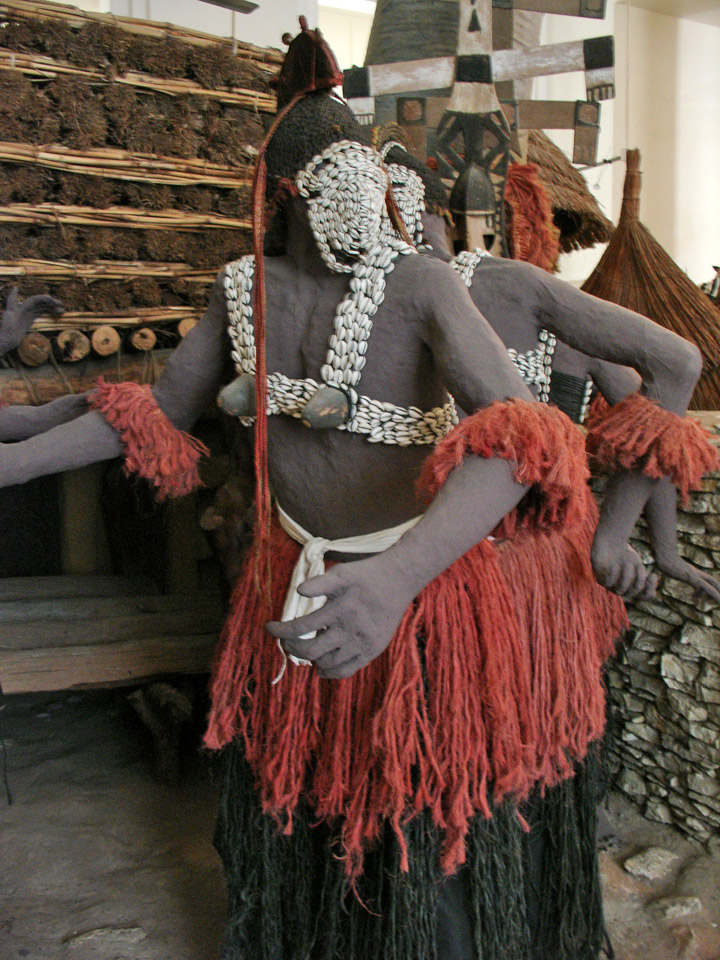
Dogon dance
Just after senoufo’s funerals, you come across the coming out of mourning of Dogons, from Mali. Who are the Dogons ? They live in the “hilly region of Bandiagara Cliffs and in the plain of Gondo located below and which goes over the boundaries of Burkina Faso”. Sub-divided into four groups( Avon, Ono, Dyon and Dommo). In all occasions, dogons invoke Amma’s mercy, the creator of the universe and of Dogon civilization. “Amma is a distant and immaterial god”. His name gives rhythm to their prayers.

tall Dogon mask

a dance of Black Africa
African Art in the lobby of the Novotel


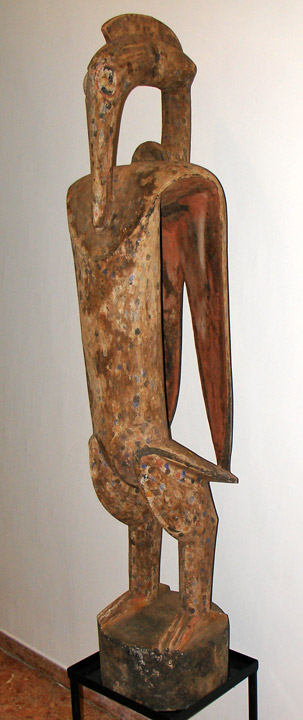
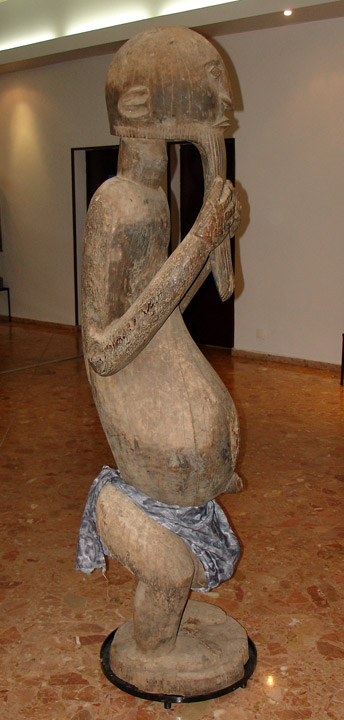
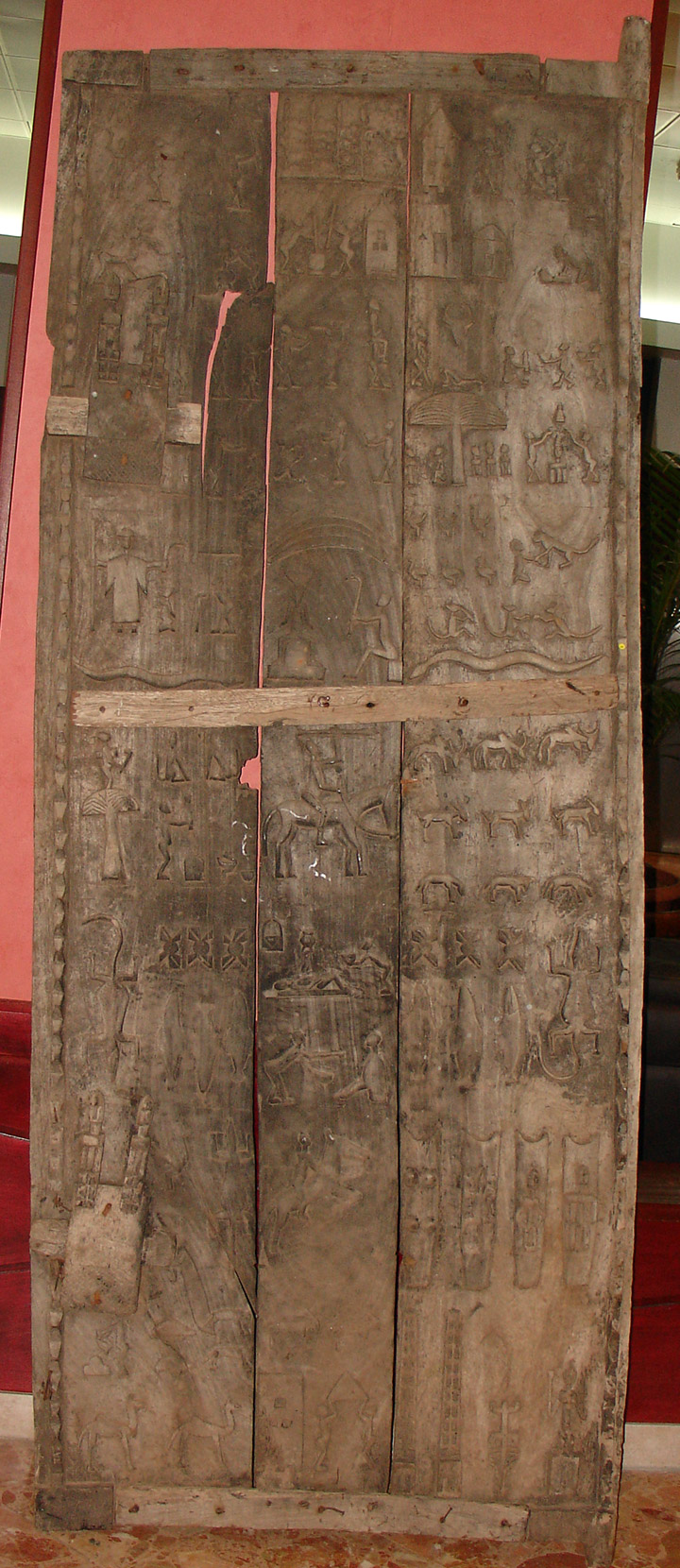
Granary Door
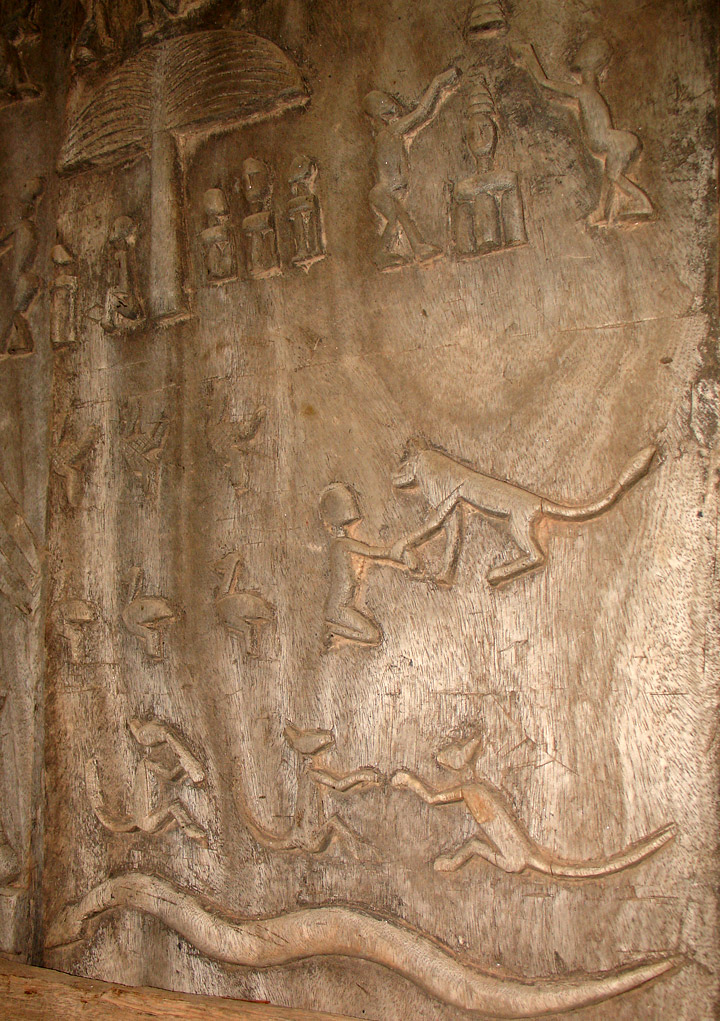
carving detail on the door
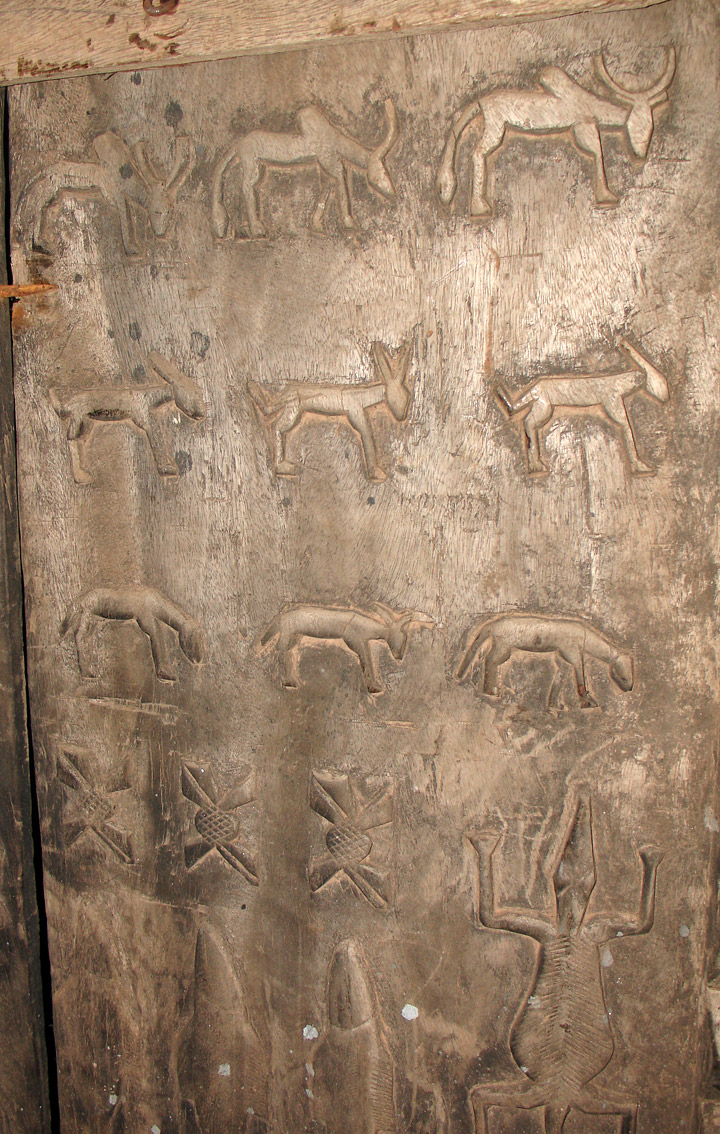
animals
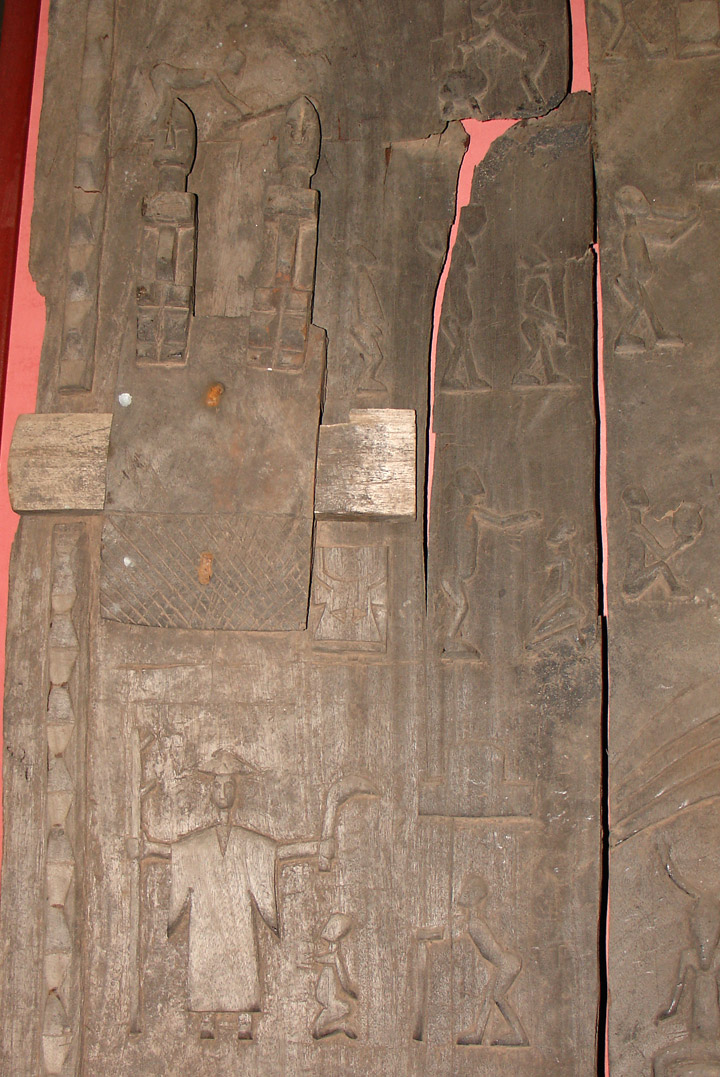
the lock

village activities
